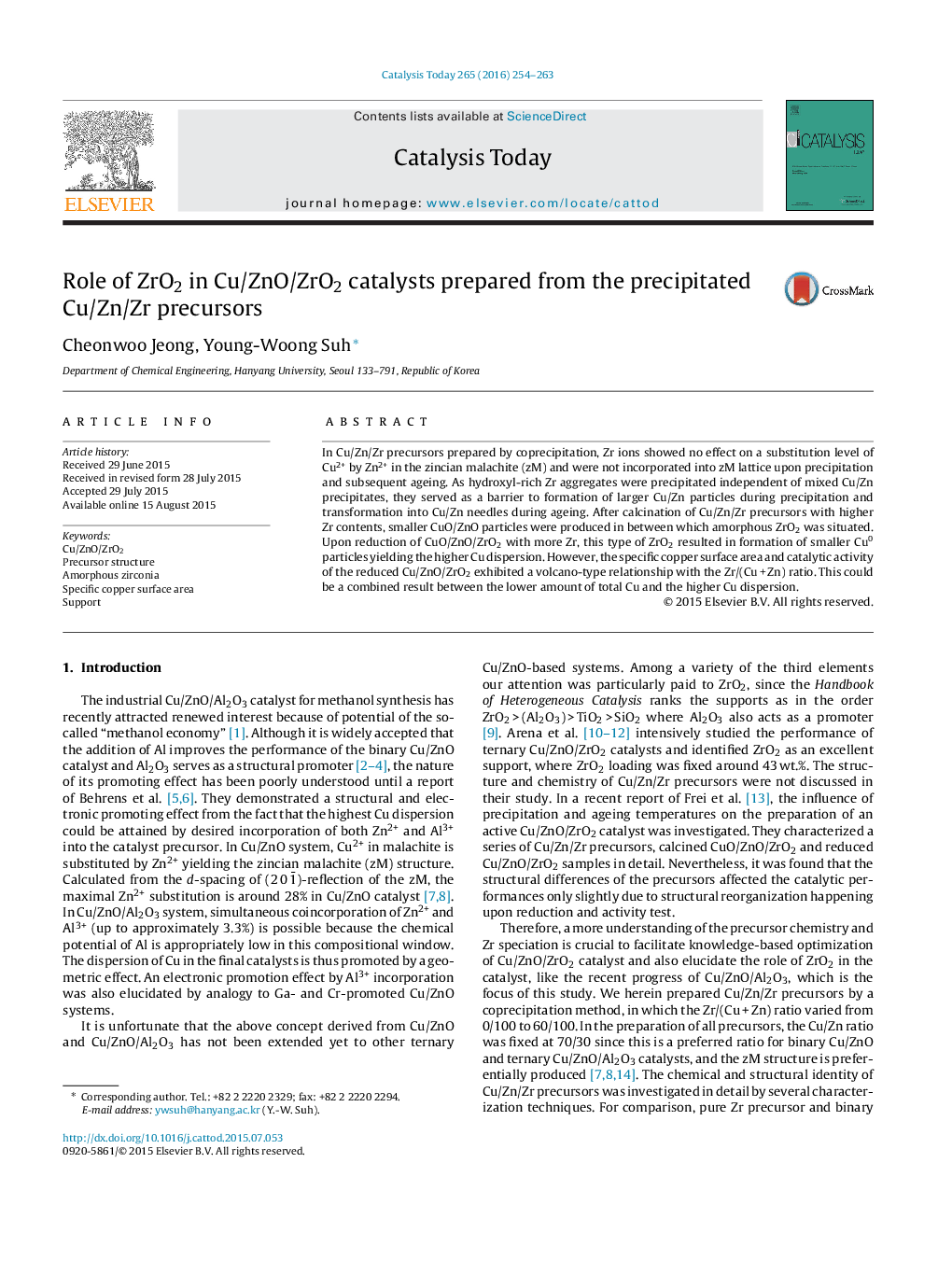| Article ID | Journal | Published Year | Pages | File Type |
|---|---|---|---|---|
| 53812 | Catalysis Today | 2016 | 10 Pages |
•No incorporation of Zr4+ into the zincian malachite (zM) lattice.•No effect of Zr4+ on a substitution level of Cu2+ by Zn2+ in the zM lattice.•Formation of smaller CuO particles due to amorphous ZrO2 serving as a “nano-spacer”.•Higher dispersion of Cu in Cu/ZnO/ZrO2 by ZrO2 acting as a support.•Volcano-type relationship of the Cu surface area and activity with the Zr content.
In Cu/Zn/Zr precursors prepared by coprecipitation, Zr ions showed no effect on a substitution level of Cu2+ by Zn2+ in the zincian malachite (zM) and were not incorporated into zM lattice upon precipitation and subsequent ageing. As hydroxyl-rich Zr aggregates were precipitated independent of mixed Cu/Zn precipitates, they served as a barrier to formation of larger Cu/Zn particles during precipitation and transformation into Cu/Zn needles during ageing. After calcination of Cu/Zn/Zr precursors with higher Zr contents, smaller CuO/ZnO particles were produced in between which amorphous ZrO2 was situated. Upon reduction of CuO/ZnO/ZrO2 with more Zr, this type of ZrO2 resulted in formation of smaller Cu0 particles yielding the higher Cu dispersion. However, the specific copper surface area and catalytic activity of the reduced Cu/ZnO/ZrO2 exhibited a volcano-type relationship with the Zr/(Cu + Zn) ratio. This could be a combined result between the lower amount of total Cu and the higher Cu dispersion.
Graphical abstractFigure optionsDownload full-size imageDownload high-quality image (384 K)Download as PowerPoint slide
